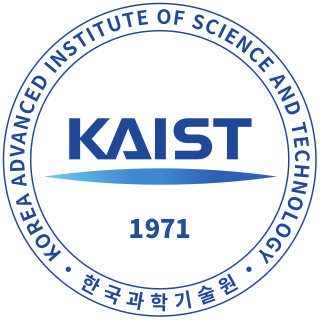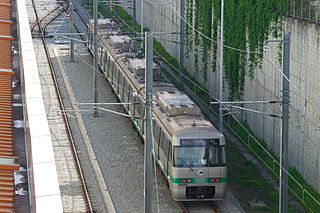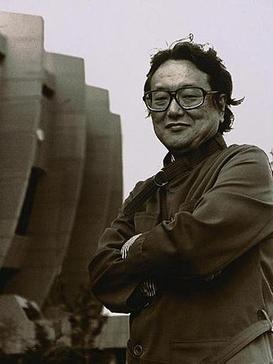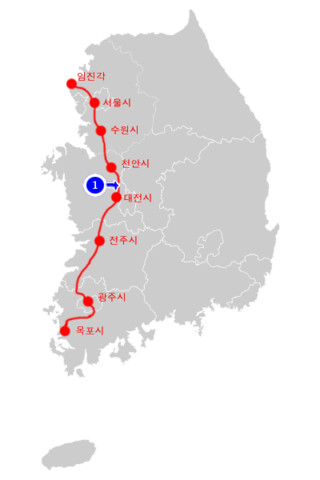
The Korea Advanced Institute of Science and Technology (KAIST) is a national research university located in Daedeok Innopolis, Daejeon, South Korea. KAIST was established by the Korean government in 1971 as the nation's first public, research-oriented science and engineering institution. KAIST is considered to be one of the most prestigious universities in the nation. KAIST has been internationally accredited in business education, and hosts the Secretariat of the Association of Asia-Pacific Business Schools (AAPBS). KAIST has 10,504 full-time students and 1,342 faculty researchers and had a total budget of US$765 million in 2013, of which US$459 million was from research contracts.

Daejeon is South Korea's fifth-largest metropolis, with a population of 1.5 million as of 2019. Located in a central lowland valley between the Sobaek Mountains and the Geum River, the city is known both as a technology and research center, and for its close relationship with the natural environment. Daejeon serves as a hub of transportation for major rail and road routes, and is approximately 50 minutes from the capital, Seoul, by KTX or SRT high speed rail.
Chungnam National University is one of ten Flagship Korean National Universities located in Daejeon, South Korea.

Dongnae District is a gu in central Busan, South Korea.

Daejeon Subway Line 1 is a subway line is located in Daejeon, South Korea. After excluding the Seoul metropolitan area, it was the fourth subway line created in South Korea, following Busan, Daegu, and Gwangju. Its line color is ● green. It is 22.6 km (14.0 mi) long with 22 stations. It is the first of five planned lines for the Daejeon Metro.

Seo District (Seo-gu) is a gu ("district") of Daejeon, South Korea. Daejeon Metropolitan City Hall is also located there.

Expo Science Park (Korean: 엑스포과학공원) is a science park in Yuseong District, Daejeon, South Korea, built for Taejŏn Expo '93. Facilities at Expo Park included a garden, amusement park, and observation tower. While the tower and some buildings remain, most of the expo buildings have now been removed. The Daejeon Convention Center became the first convention center in the city in 2008 and opened their second building in 2022.
Daedeok Innopolis, formerly known as Daedeok Science Town, is the research and development district in the Yuseong-gu district in Daejeon, South Korea. The plan to concentrate research institutes and universities was made in 1967 and president Park Chunghee approved subsequent master planning in 1973. Now the district contains over 20 major research institutes and over 40 corporate research centers. There are 232 research and educational institutions to be found in Daejeon, many in the Daedeok region, among them the Electronics and Telecommunications Research Institute and the Korea Aerospace Research Institute. A number of IT venture companies have sprung up in this region due to the high concentration of Ph.Ds in the applied sciences. Korea has invested heavily in building up the research expertise for over 30 years, creating long-term research programs. Over 17,000 PhD researchers are in the sciences in Daedeok and it had the most application for patents during 2000–2011 among the National Industrial Complex.

Daejeon Metro is the rapid transit system of Daejeon, South Korea, operated by the Daejeon Metropolitan Express Transit Corporation. The single-line subway network first opened in 2006 with 12 stations. The line was expanded in 2007 and it now consists of one line, 22 operating stations, and 22.74 kilometres (14.13 mi) of route.

Daedeok District (Daedeok-gu) is a district in Daejeon, a metropolitan city in South Korea. Headquarters of KT&G, Korea Ginseng Corporation and Korea Water Resources, and Daejeon Logistics Terminal, Korea Express are located in this district.

The Daejeon Museum of Art is located at 396 Mannyeon-dong, Seo-gu, across the river from the Expo Science Park, in Daejeon, South Korea. It opened on April 15, 1998.

Dong District is a district in Daejeon, a metropolitan city in South Korea. Dong-gu consists of a total of 16 dongs, including Yongun-dong, Hyo-dong, and Sannae-dong.

Islamic Center of Daejeon was established in December 2006 and located in Yuseong-gu, Daejeon, South Korea. It lies in the midst of a triangle containing Korea Advanced Institute of Science and Technology (KAIST), Information and Communication University and Chungnam National University. The closest Daejeon metro station is Wolpyeong (KAIST).

Kim Swoo Geun was a prominent South Korean architect, educator, publisher and patron of artists. Along with architect Kim Chung-up (김중업), he is recognised as a significant contributor in the history of Korean architecture. With his support for diverse art genres of Korean culture, he was referred to as Lorenzo de Medici of Seoul by TIME in 1977.

Soongsil University (SSU) is the first modern university in Korea, dating its history back to 1897. It was founded under the Christian missionary William M. Baird. The campus is located in 369 Sangdo-ro, Dongjak-gu, Seoul, South Korea.

National Route 1(Korean: 국도 제1호선; RR: Gukdo Je Il Hoseon) is a national highway in South Korea. It connects Mokpo, South Jeolla Province with the city of Paju in Gyeonggi-do. Before the division of the Korean peninsula, the highway ran until Sinuiju, North P'yongan Province, in present-day North Korea.
National Route 17 is a national highway in South Korea. It connects the city of Yeosu to the cities of Suncheon, Namwon, Jeonju, Daejeon, Cheongju, and Yongin.

Noeun Station is a station of Daejeon Metro Line 1 in Noeun-dong, Yuseong District, Daejeon, South Korea.
Local Route 32 Daejeon–Mungyeong Line is a local route of South Korea that connects Yuseong District, Daejeon to Mungyeong, North Gyeongsang.
Seosan–Yeongdeok Expressway also known as 6th East–West Expressway is an expressway in South Korea connecting Dangjin to Yeongdeok County.

















